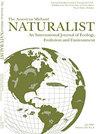与最近在伊利诺伊州高草草原重新引入的野牛相比,规定的火灾对人工鸟巢捕食的影响更大
IF 0.6
4区 环境科学与生态学
Q4 Agricultural and Biological Sciences
引用次数: 0
摘要
摘要放牧对草地鸟类的丰度和繁殖成功都有不同的影响(例如,由于鸟类对稀疏或密集植被结构的偏好、巢捕食者对放牧的反应和/或践踏巢的差异)。再加上规定的火灾,放牧的影响可能会因热草食而加剧——食草动物偏好选择新燃烧的地点进行放牧。本研究的目的是确定最近重新引入的美洲野牛(bison bison)加上规定的火灾对草原鸟巢的影响。利用人工筑巢来确定放牧和火灾是否会影响筑巢成功率、哺乳动物的总捕食率以及最常见的筑巢捕食者小鼠的捕食率。在野牛重新引入之前(2014年)和之后(2015-2018年),在有野牛和没有野牛的地点放置人工鸟巢;研究发现,重新引入野牛对筑巢成功率和哺乳动物捕食总量的影响可以忽略不计。然而,与未燃烧的地方相比,燃烧的地方筑巢成功率较低。与未烧地相比,烧地捕食事件的总比例增加与筑巢成功的减少有关。此外,在烧过的地点,Peromyscus spp.的捕食事件比例略高于未烧过的地点。虽然在野牛重新引入后,Peromyscus的捕食增加了,但规定的火力差异推动了这种变化。我们的研究结果表明,规定的火可能会增加人工鸟巢的捕食,这表明可能对地面筑巢的草地鸟类产生影响。相比之下,野牛在重新引入后的头4年里对人工筑巢成功率的影响微不足道。本文章由计算机程序翻译,如有差异,请以英文原文为准。
Prescribed Fire Has a Greater Impact on Artificial Nest Predation Than a Recent Bison Re-introduction in Illinois Tallgrass Prairie
Abstract. Grazing differentially affects both the abundance and breeding success of grassland birds (e.g., due to differences in bird species' preferences for sparse or dense vegetation structure, nest predator response to grazing, and/or trampling of nests). Coupled with prescribed fire, grazing impacts can be compounded by pyric herbivory—the preference of grazers to choose newly-burned sites in which to graze. The purpose of this study was to determine how a recent re-introduction of American bison (Bison bison) coupled with prescribed fire may impact grassland bird nests. Artificial nests were used to determine if grazing and fire impacted nest success, total mammalian depredation, and depredation by the most common nest predator, mice (Peromyscus spp.). Artificial nests were placed in sites with and without bison before (2014) and after bison re-introduction (2015–2018); sites had fire return intervals from 1–2 y. We found the re-introduction of bison had a negligible influence on nest success and total mammalian depredation. However, nest success was lower in burned sites compared to unburned sites. The decrease in nest success correlated with an increase in total proportion of depredation events in burned sites compared to unburned sites. In addition, the proportion of Peromyscus spp. depredation events was marginally higher in burned sites compared to unburned sites. Although predation by Peromyscus increased after bison re-introduction, prescribed fire differences drove this change. Our results suggest prescribed fire may increase nest predation of artificial nests, indicating a possible impact on ground-nesting grassland birds. In contrast, bison had a negligible impact on artificial nest success in the first 4 y following their re-introduction.
求助全文
通过发布文献求助,成功后即可免费获取论文全文。
去求助
来源期刊

American Midland Naturalist
环境科学-生态学
CiteScore
1.20
自引率
0.00%
发文量
38
审稿时长
18-36 weeks
期刊介绍:
The American Midland Naturalist has been published for 90 years by the University of Notre Dame. The connotations of Midland and Naturalist have broadened and its geographic coverage now includes North America with occasional articles from other continents. The old image of naturalist has changed and the journal publishes what Charles Elton aptly termed "scientific natural history" including field and experimental biology. Its significance and breadth of coverage are evident in that the American Midland Naturalist is among the most frequently cited journals in publications on ecology, mammalogy, herpetology, ornithology, ichthyology, parasitology, aquatic and invertebrate biology and other biological disciplines.
 求助内容:
求助内容: 应助结果提醒方式:
应助结果提醒方式:


